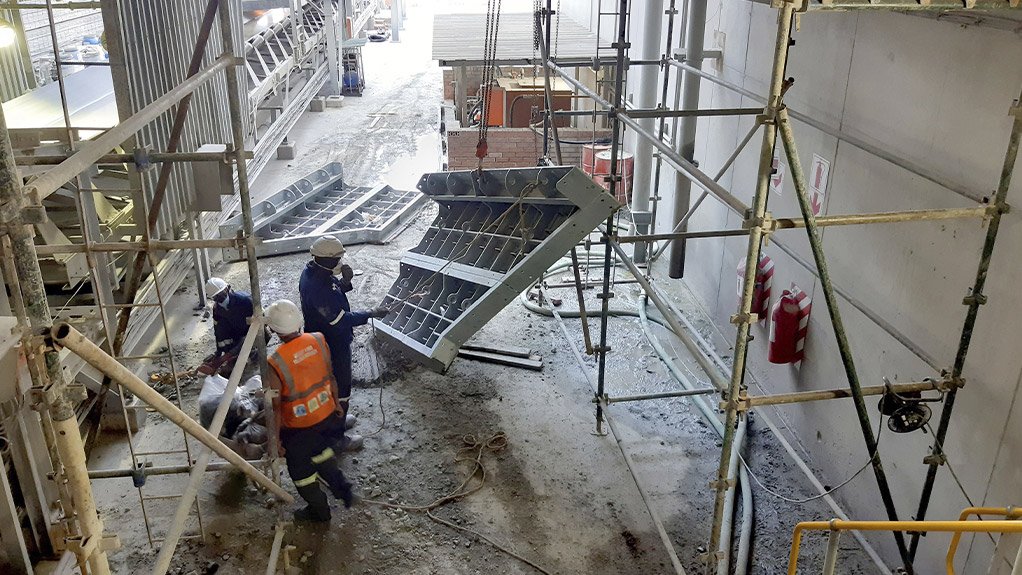
During the installation of the custom engineered Weba chute
(Virtual Showroom); A Limpopo platinum mine was struggling to monitor and maintain the lining on one of its most important chutes – which took run-of-mine ore from the concentrator plant’s primary crusher. A breakthrough idea from Weba Chute Systems now allows liner inspections to take place quickly, easily and at any time during production.
“The chute in question channelled ore from the rock box under the primary crusher, onto an apron feeder, and is choke-fed at all times – making access difficult,” says Hilton Buys, regional manager at Weba Chute Systems. “Another challenge was that the wear on the liners could not be visually inspected unless there was a shutdown.”
Even then, liner monitoring was a difficult job, where the spiel bars needed to be pushed in and the area of the transfer point place made safe to inspect and change liners. Liners then had to be cut to size once inspection was done and the worn liners identified, says Buys.
“Our innovation was to cut ‘pigeon-holes’ in the chute through which the liner is always visible,” he says. “This allows us to apply a thickness tester – or probe – to the liner from the outside of the chute while the plant is running.”
Through the regular testing of liner thickness, it becomes much easier to plan maintenance ahead of time, he explains. By tracking the extent of wear through regular and continuous testing, the expected life of the liners can be accurately predicted. This is done by building the mine’s throughput figures into the wear life equation. If throughput remains roughly the same, the wear levels can be forecast so that maintenance can be planned proactively. This in turn allows the necessary spares to be procured, in time for the next planned shutdown.
“So successful was our first application of this idea in August 2020, that we are now in the process of manufacturing a second unit like this,” he says. “The enthusiastic reception of the plant management suggests that there are great things to come for this innovation.”
He highlights that there is potential for the pigeon-hole concept to be applied to the chutes at all nine apron feeders on this site, and possibly even more in another section of the mine. Among its benefits is the enhanced safety factor, as maintenance technicians do not have to work under the rock box with a stockpile above. These liners can be replaced from outside the chute and there is no real need to get inside the chute itself.
“Even with the use of spiel bars, the working environment is not ideal, and mines are increasingly committed to achieving zero harm,” he says. Cleaning the silos and rock boxes so that inspection take place inside the chute also takes two to three days, so it is an onerous and time-consuming activity – which can be dispensed with using the pigeon-holes to measure liner thickness.